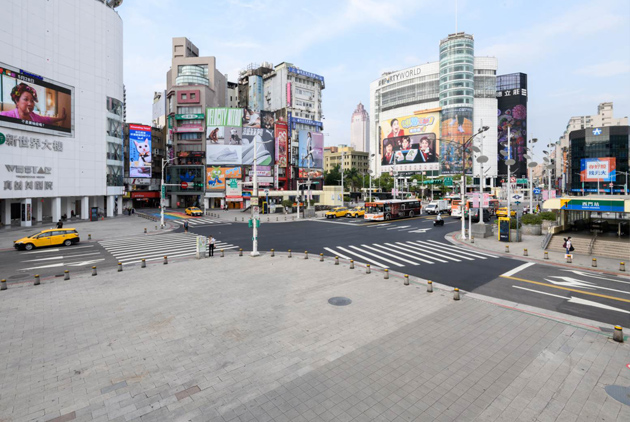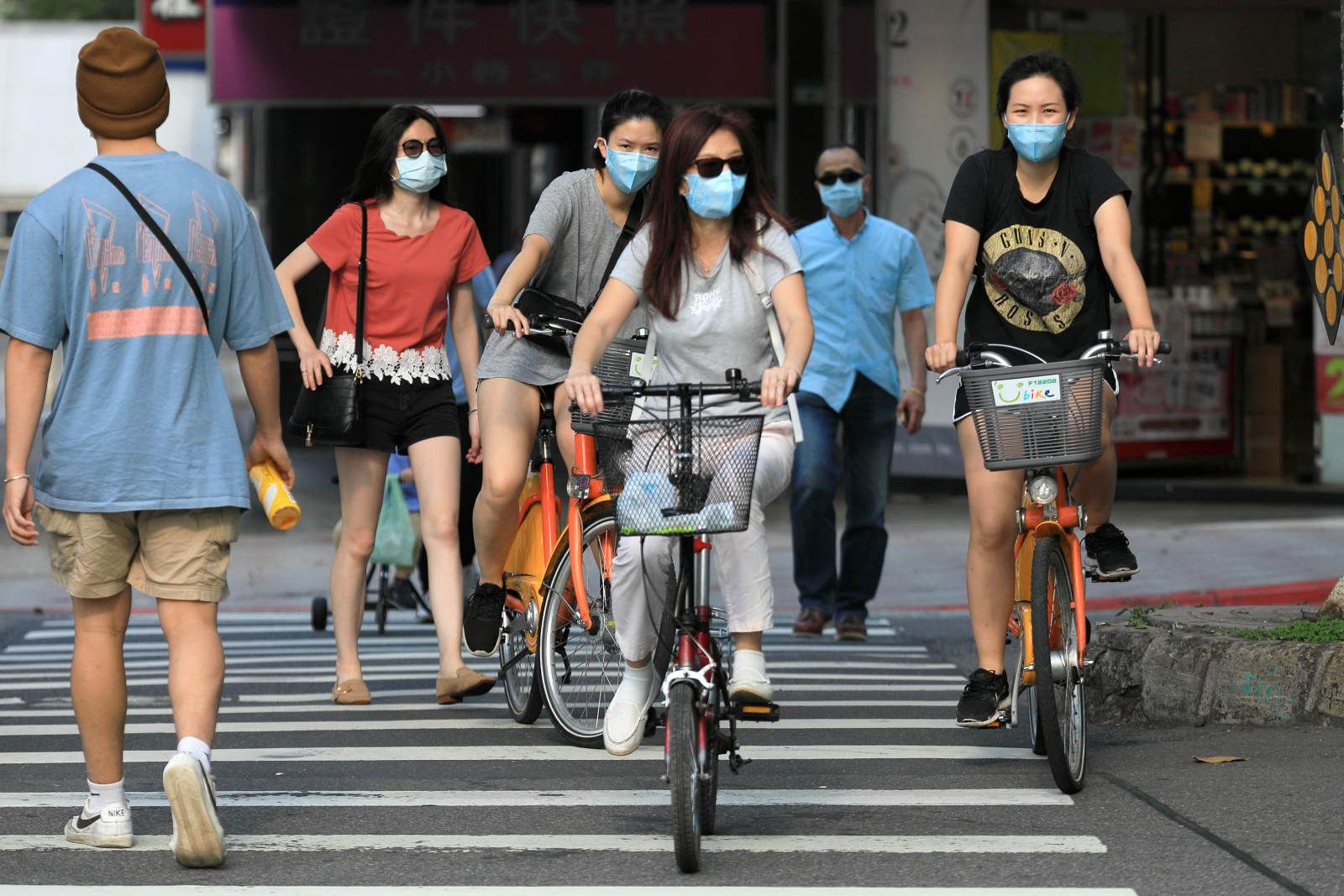NTU expert: Taiwan doesn’t need lockdowns

Source:Pei-Yin Hsieh
The recent COVID-19 outbreak in Taiwan continues to spread locally, sparking an island-wide level 3 alert. Yet why do some experts posit that Taiwan does not need to impose a lockdown? What lessons can Taiwan learn from other countries now that it faces a community outbreak?
Views
NTU expert: Taiwan doesn’t need lockdowns
By Ching Fang Wuweb only
♦ Updated daily |Taiwan’s Covid-19 Outbreak
♦ Infographics|Taipei Lockdown
Community transmission of COVID-19 has reached alarming levels. On May 26, 302 new confirmed cases of COVID-19 were announced, the 9th day in a row that the number of new confirmed cases has exceeded 200.
Across Taiwan, more than 6,000 people have now contracted the virus. The nationwide level 3 alert, originally in place from May 20 to May 28, has already been extended to June 14, and speculation is rife about whether further restrictions are on the horizon.
Should Taiwan see a sharp increase in domestic cases in the order of more than 100 cases over the past 14 days, with at least half of the infections stemming from unknown sources, a stricter level 4 alert could be implemented. This would mean a total ban on social gatherings and a lockdown in towns, cities or counties where the outbreak is severe.

(Source: Pei-Yin Hsieh)
Since the outbreak, public discourse has revolved around the question of whether lockdowns of entire cities or areas would be necessary should the pandemic situation come to the worst.
“There is nothing wrong with lockdowns, but it is very difficult to get this done 100%,” says Professor Wen Tzai-hung (溫在弘), chair of the Department of Geography at National Taiwan University. Based on people’s movements in 26 epidemic prevention areas of Taipei and New Taipei, Wen simulated partial lockdowns last year. He points out that research on pandemic-related restrictions around the globe and practical experience show that lockdowns in a top-to-bottom approach only create a vicious cycle that aggravates the pandemic: “Even just 1% sneak through would cause 100% damage to the situation,” he says.
Over the past year, Wen has looked into the experiences from the various lockdowns around the world. After modeling partial lockdowns in Taipei and New Taipei in a study, he has strong reservations about compulsory measures. The following are excerpts from his interview with CommonWealth Magazine:
Q: With the implementation of a level 3 alert, gatherings have been restricted, office density has been reduced by transferring staff to other locations, and schools and universities have switched to online classes. Can these measures help fight the pandemic?
A: We shouldn’t expect the pandemic to go away just by relying on reducing or blocking contacts and increasing social distancing. People will eventually still have contacts, what is meant to happen will happen. The true purpose of all restrictions is buying time — so that the peak [of the pandemic] can be delayed to occur somewhat later, but it will still occur much later. The number of confirmed cases is a lagging indicator. You will only know whether the measures you are currently taking are effective after two to three weeks.
The policy of restricting people’s movements must be sustainable if it’s to be for the long run. It’s all the more important that the healthcare system has enough time to react and prepare. These factors play an extremely important role in managing an epidemic.
For Taiwan, the worst-case scenario of a mandatory lockdown is an increasingly unlikely proposition.
Q: Would a lockdown be the worst-case? The Central Economic Command Center keeps emphasizing that level 3 and level 4 alerts are not lockdowns. Are lockdowns really not feasible?
A: It’s a question of cost effectiveness. If you look at the possible outcomes, I am afraid it wouldn’t be enough because even if just 1% slipped through, they still could cause 100% damage. The reason why we want to avoid lockdowns or compulsory measures at all cost, is not because these are wrong but because it is very difficult to do the job 100%.
The experiences [with lockdowns] abroad, including in China, show that unless you are able to achieve 100%, a few loopholes will cause your entire effort to come to naught. Our epidemic model used in the computer simulation also shows that just one loophole will greatly undermine the effect (of a lockdown).
The cost of restricting the movement of people is very high. When you spend so many resources but are not able to impose your lockdown 100%, with the pandemic spreading even further, then the situation will become worse. When the lockdown fails, people lose trust in the government and no longer observe the rules. This will lead to widespread panicking, a stock market collapse and economic breakdown, soaring unemployment…a host of negative cycles that are not conducive to bringing the pandemic under control.
Lockdowns are a means of last resort. But I think that the worst-case scenario of a mandatory lockdown is now becoming increasingly unlikely for Taiwan.

(Source: Chien-Tong Wang)
Maintaining normal life and controlling the pandemic with area-based prevention
If the local outbreak [in Taiwan] had happened a year ago, we would not have known when it would end. But now we are in a very different situation than the countries abroad who were forced to impose lockdowns. For us, the foreseeable end point is very clear: Vaccinations can solve the epidemic, but we need to buy time to get prepared.
If we have vaccines, we will be able to use comparatively soft measures to increase social distancing while also continuing to implement policies efficiently. That way, the public won’t develop strong negative feelings or panic. When we get vaccines, the situation will develop in a better direction.
Q: In your study, you suggest that the government promote area-based epidemic prevention. Can this replace lockdowns?
A: The core concept behind area-based epidemic prevention is not to lock down places but to have the capability to fight an epidemic for a long time. This will allow us to maintain a normal life for the population at the most basic level while also achieving the goal of pandemic control.
Citizens do not need to leave their areas if daily necessities and other resources are available in the local communities, and if resources are plentiful and varied.
The question we should ask ourselves is whether the basic goods and materials can satisfy [the needs of] the local residents and for how long that supply can be maintained.
When we analyzed all of the resources in the 26 areas in Taipei and New Taipei, we found that these resources are distributed quite evenly; there is no dramatic gap. When every individual is able to equitably obtain resources, there is no need for forced top-to-bottom control. Instead, people will avoid moving across areas on their own account.
In the past, we used to think that population density is a risk factor in terms of epidemic outbreaks. But research published abroad shows that this is not the case, since contact behavior is the real reason why epidemics happen.
Most people can only have contact with a handful of people, and these are normally not the ones causing the spread of an epidemic. It’s the behavior of a small number of specific people who engage in contact with many people in many places that leads to the occurrence of large-scale epidemics. In the future, our focus will be on how such behavior can be monitored and controlled.

The 26 epidemic prevention areas in Greater Taipei (Taipei, New Taipei). (Source: CommonWealth Magazine)
Taiwan has a new opportunity to create a democratic model for epidemic prevention
Q: What strengths does Taiwan have in comparison to other countries in the current fight against local transmission, apart from vaccinations?
A: Taiwan can reference much more experience and scientific studies from abroad.
During the past year, the epidemic control measures and social distancing policies implemented by democratic countries like Britain or the United States proved to be failures; they had no other choice but wait for a vaccine to inoculate the entire population as a preventive measure. And the model students in terms of epidemic prevention, Singapore and Vietnam, are rather autocratic nations.
Unlike China, we did not lose control in the early stages of the pandemic. And in contrast to Europe and the United States, we also do not face street protests by people who refuse to wear face masks or challenge real-name registration. If the government is able to control and plan resources well, people will also be able to increase social distancing on their own initiative in a bottom-up manner. I think that Taiwan has a new opportunity to create a democratic model of epidemic prevention.
Taiwan and New Zealand are both island nations that are relatively easily sealed off. But another key issue is that the New Zealanders trusted their government; that’s why the government was able to allocate resources. Therefore, it is important for our government at this stage to figure out how to secure the public’s confidence.
Have you read?
♦ Updated daily |Taiwan’s Covid-19 Outbreak
♦ Infographics|Taipei Lockdown
Translated by Susanne Ganz
Edited by TC Lin
Uploaded by Penny Chiang






